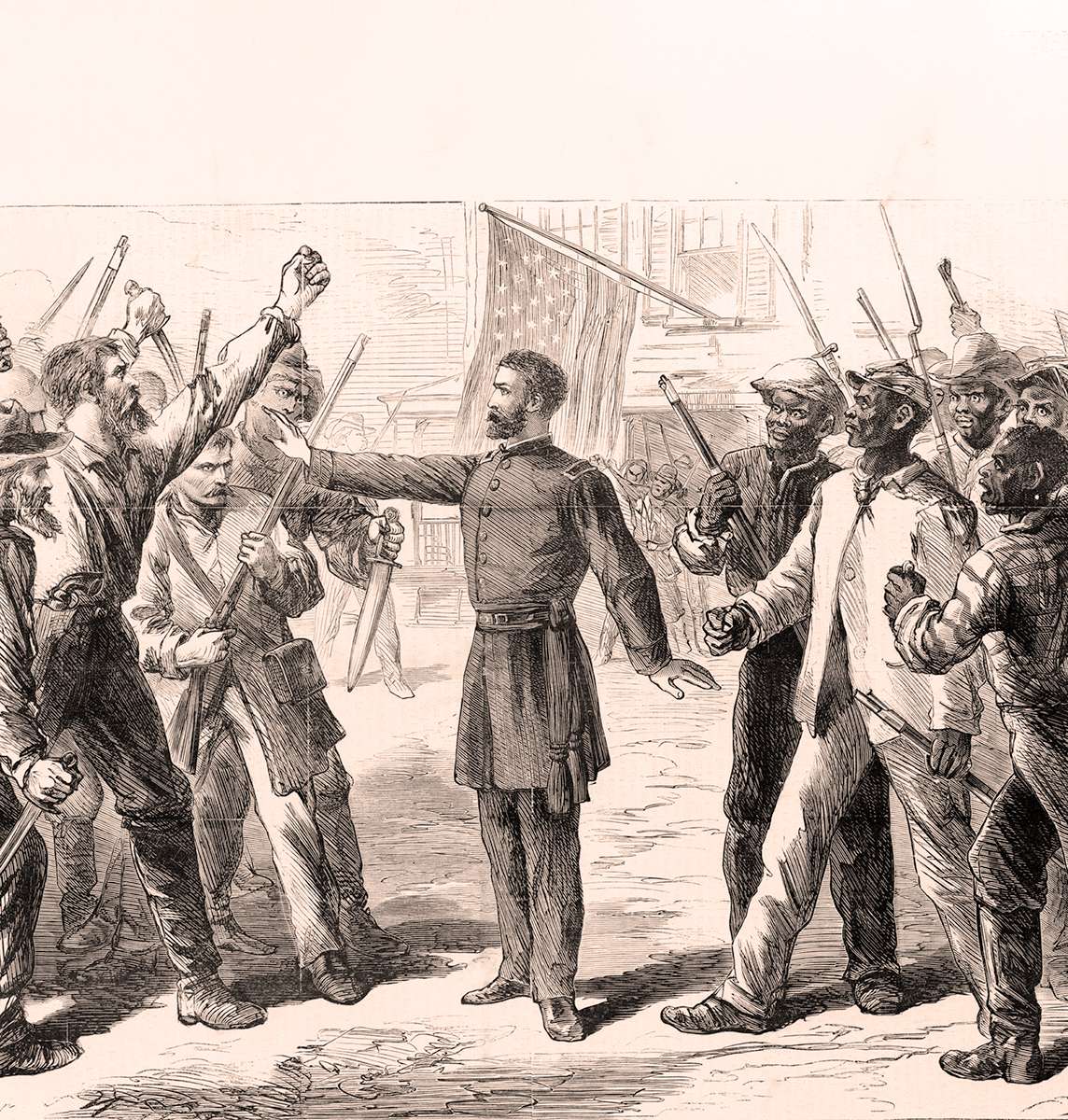Labor & Land
Labor & Land
Nowhere else in the South did freedpeople have better opportunities to own land and earn a fair wage.

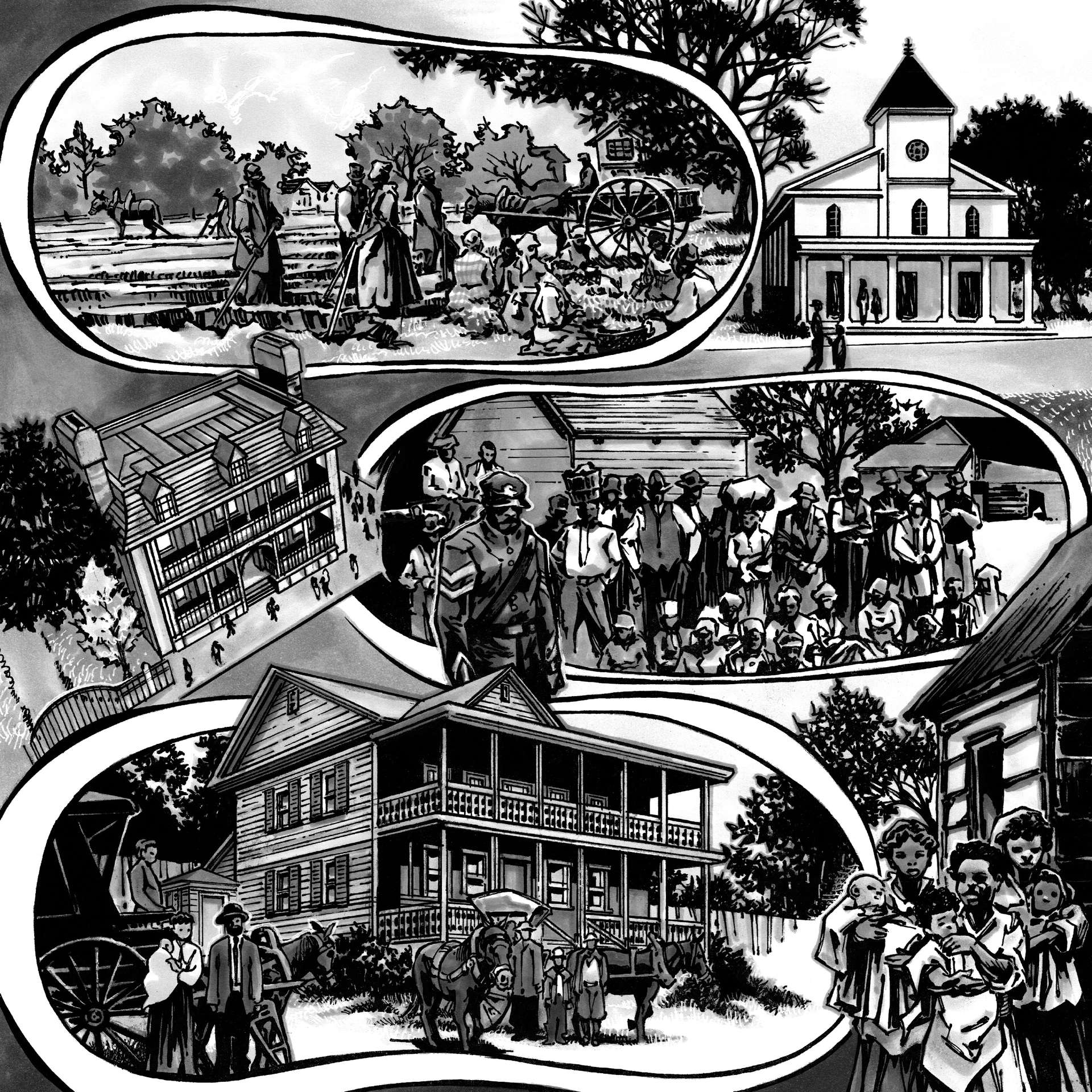
Freedpeople found new opportunities to own land and build wealth by purchasing property through direct tax auctions, negotiating fair labor contracts, and opening bank accounts at the Freedmen’s Bank.
The Pursuit of Land
In the agrarian economy of the South, the ability to own land was central to fulfilling the promise of freedom. Many freedpeople in the Sea Islands felt deeply connected to home. The Sea Islands were where they and their forebearers had toiled as slaves, and now that they were free, many wanted to stay where they were, as proprietors of their own farms.
We want our own land. This very land. That's rich with our sweat of our face and the blood of our backs.

Hubbard & Mix, photographer. Negro family and home, St. Helena Island. South Carolina United States Saint Helena Island, 1863. [United States: Publisher not identified, between -June 1866] Photograph. Library of Congress
From the beginning of the Rehearsal through the end of Reconstruction, African Americans in the Sea Islands had far more chances to acquire land than people who lived elsewhere in the South. Direct tax auctions offered an opportunity for Sea Islands freedpeople to buy land. The U.S. government held these auctions to sell the properties of white landowners who had fled the area, leaving their property taxes unpaid. In 1864, Robert Smalls purchased his former enslaver’s house in this manner.


As a free man, Robert Smalls bought the house of his former enslaver. Historic American Buildings Survey Public Domain
Some U.S. military leaders in coastal South Carolina, Georgia, and Florida saw placing Black refugees on abandoned lands as a good military strategy. It kept cotton and other important crops growing even as the war raged on. It also allowed freedpeople a chance to earn a living by cultivating the land.
On January 16, 1865, U.S. Army Major General William T. Sherman issued Special Field Orders No. 15. The orders set aside a large swath of land abandoned by white planters along the coasts of South Carolina, Georgia, and Florida for the occupation and possession of freedpeople. Drawn by the possibility of having their own piece of land, 40,000 freedpeople settled on “Sherman land” by the middle of 1865. But the deeply racist Andrew Johnson, who became president after Lincoln’s assassination in 1865, ordered this land returned to the former owners.
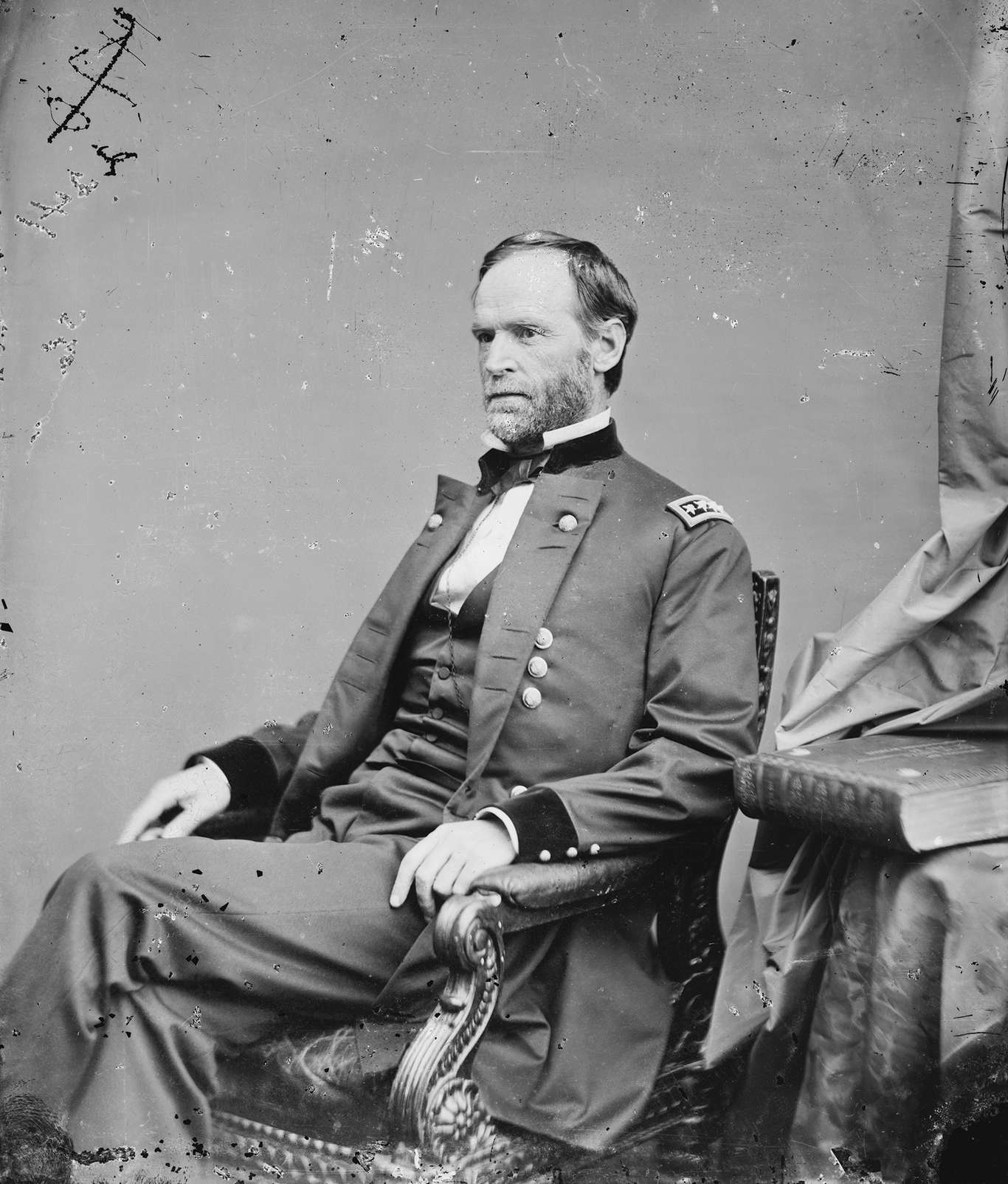
General William T. Sherman, U.S.A. , 1869. Photograph. Library of Congress
Black people on the Sea Islands sent an eloquent petition to President Johnson:
This is our home, we have made these lands what they are. We were the only true and loyal people that were found in possession of these lands… are not our rights as a free people and good citizens of these United States to be considered before the rights of those who were found in rebellion against this good and just Government?
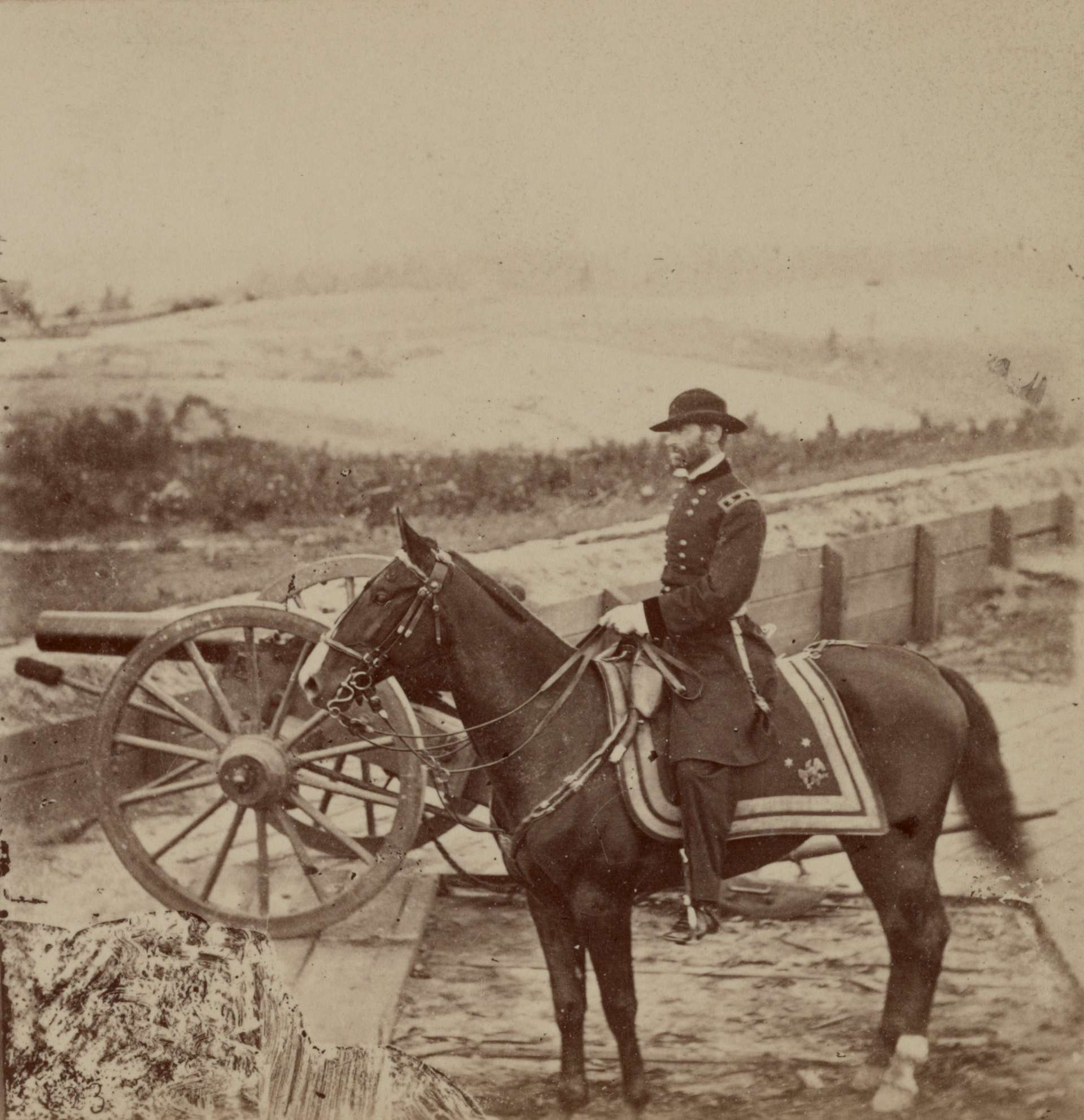
Barnard, George N, photographer. "Old Tecumseh" Himself. United States, 1864. Hartford, Conn.: The War Photograph & Exhibition Company, No. 21 Linden Place Sept. Photograph. Library of Congress

App Stop
In the Free & Equal mobile app, you can discover an album containing Sgt. Brown’s land purchase agreement and hear from his third great grandson about the community that land purchase led to 150 years later. Download the mobile app and go to stop 11.
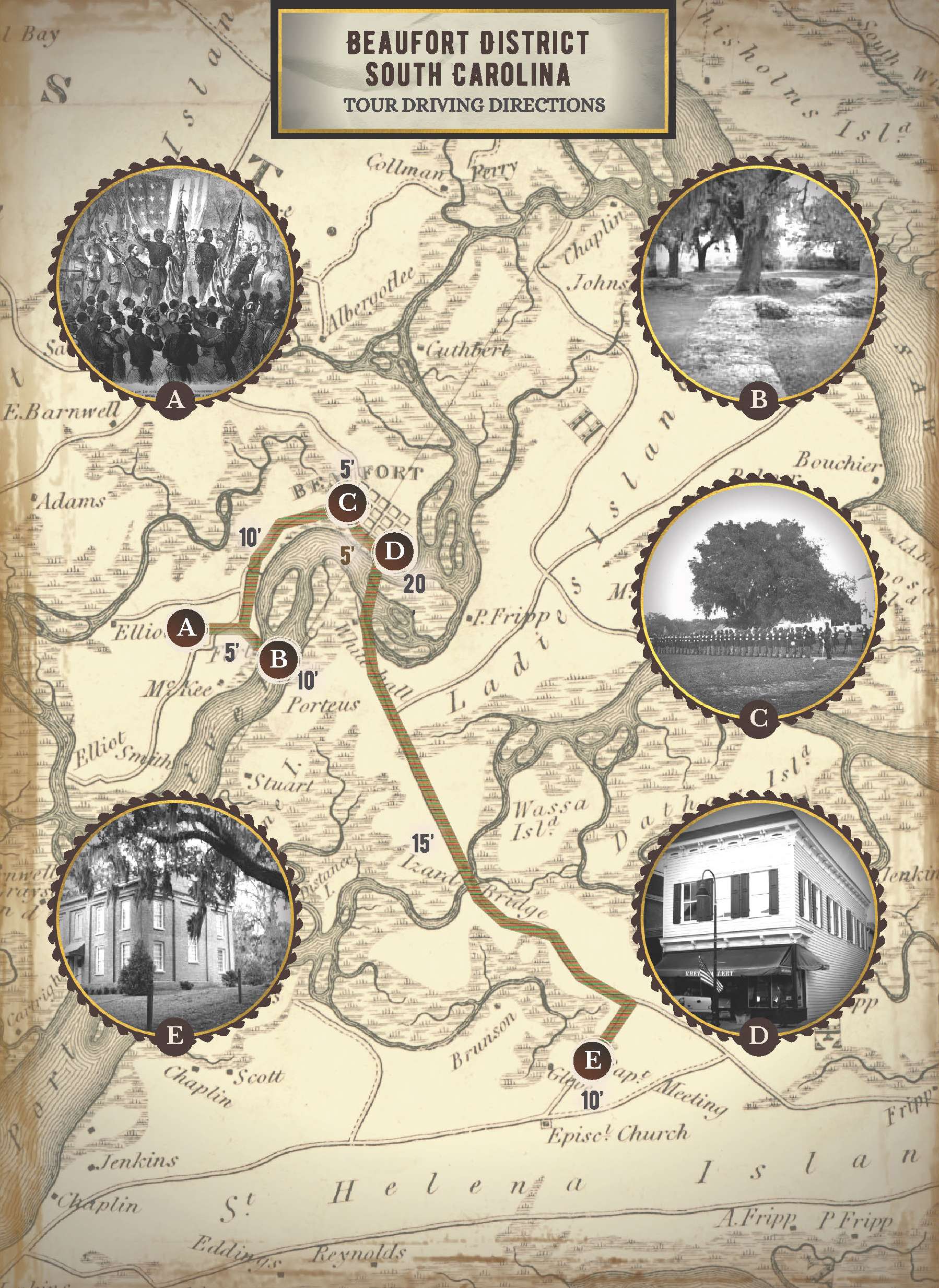
To download the mobile app visit freeandequalproject.com
The Freedmen’s Savings Bank
The bustling wartime economy also meant that money was flowing in the Sea Islands. With luck and resourcefulness, the formerly enslaved could begin to accumulate some wealth. This was done with an account at the Freedmen’s Bank, an institution established by Congress to promote thrift among freedpeople. Isaiah Brown and his family members deposited their military wages in the Freedmen’s Bank in Beaufort. In February of 1865, Isaiah, Cuffee, and Harry Brown all used those funds to buy ten acres of land for $15 a piece from the U.S. government.
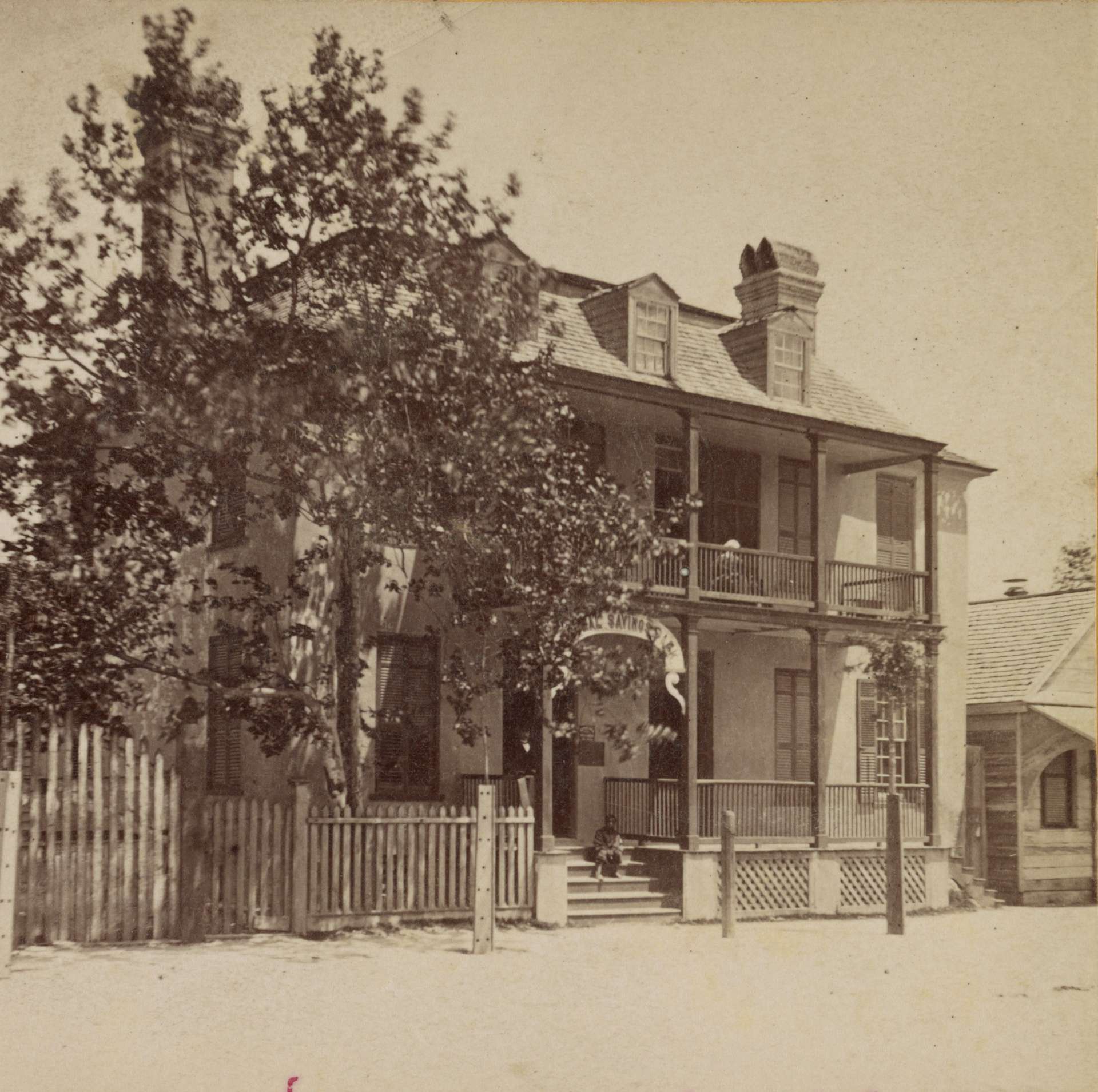
Hubbard & Mix, photographer. Freedman's Bank Beaufort So. Ca. South Carolina United States Beaufort, 1863. [Beaufort, S.C.: Hubbard & Mix, practical photographers, between and June 1866] Photograph. Library of Congress

App Stop
In the Free & Equal mobile app, you can see the building where the first Freedmen’s Bank was located and then go next door to discover Sgt. Brown’s bank files, uncovering clues about how the bank allowed him to convert his plantation life into a thriving farm. Download the app and go to chapter 8 to hear the stunning story.

To download the mobile app visit freeandequalproject.com
Earning a Wage
While many freedpeople were not able to acquire land, in the Sea Islands they began to earn wages for the first time in their lives. With the planters gone, only they held the necessary skills to harvest the cotton crops that the military officials and cotton agents desperately wanted. Though most freedpeople could not read or write, the newly arrived educators helped them negotiate labor contracts that provided either wages or a portion of the profits from the cotton crops. This new ability to make demands about the terms of their labor represented a major step forward. The wealth they accumulated allowed them to exercise freedoms they had always been denied, like establishing homes, buying furnishings and clothes, and saving for an uncertain future.
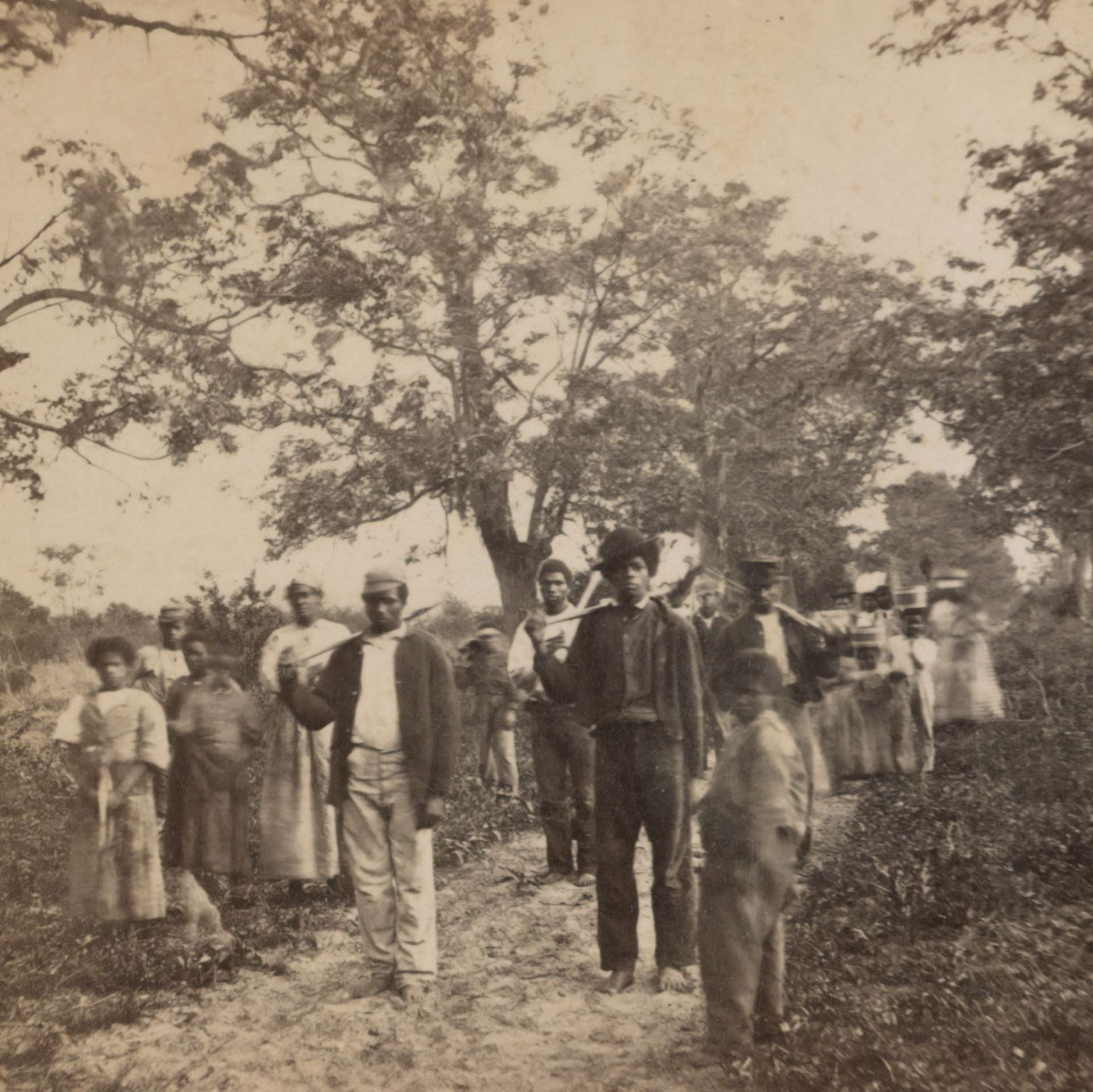
Hubbard & Mix, photographer. Group of Negros on their way to the cotton field, St. Helena Is. i.e. Island, S.C. South Carolina United States Saint Helena Island, 1863. Photograph. Library of Congress
During the Sea Islands Rehearsal, formerly enslaved people experienced freedom for the first time. With the protective shield of federal occupation, freedpeople collaborated with Northern allies to advance education, property and business ownership, religious freedom, and civic engagement. Even when Reconstruction was overthrown in most of the South, gains made by African Americans in the Sea Islands persisted.

The Miriam and Ira D. Wallach Division of Art, Prints and Photographs: Photography Collection, The New York Public Library. "Cotton field." New York Public Library Digital Collections
